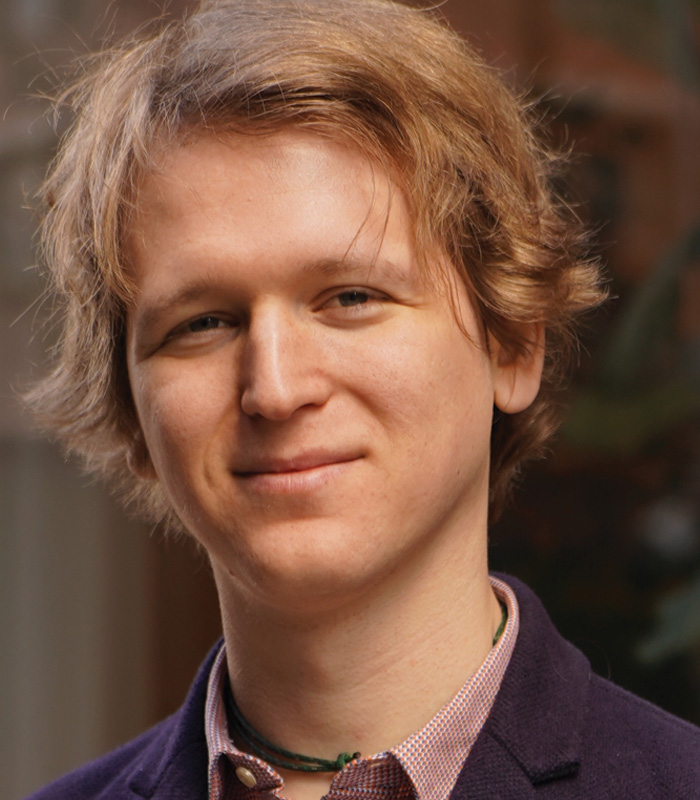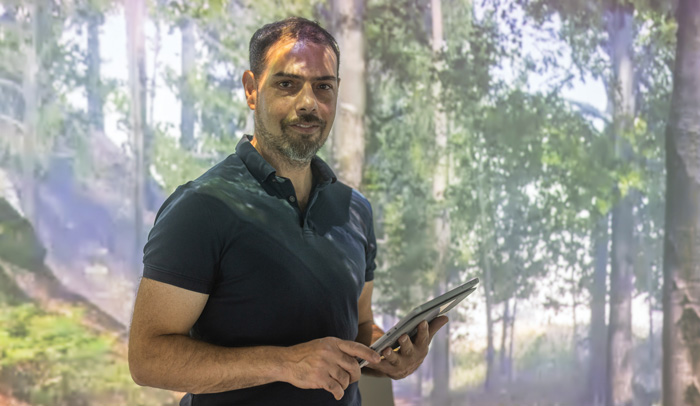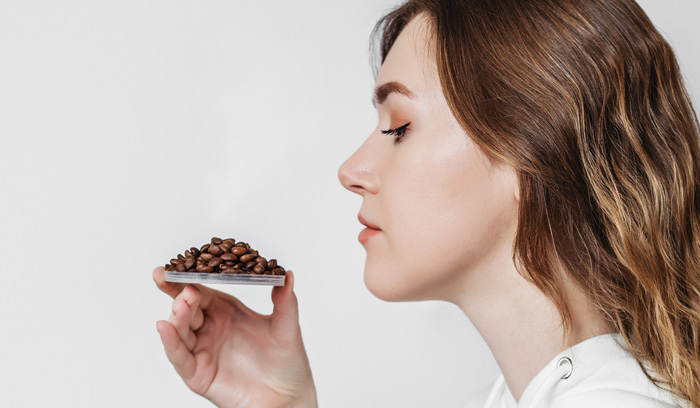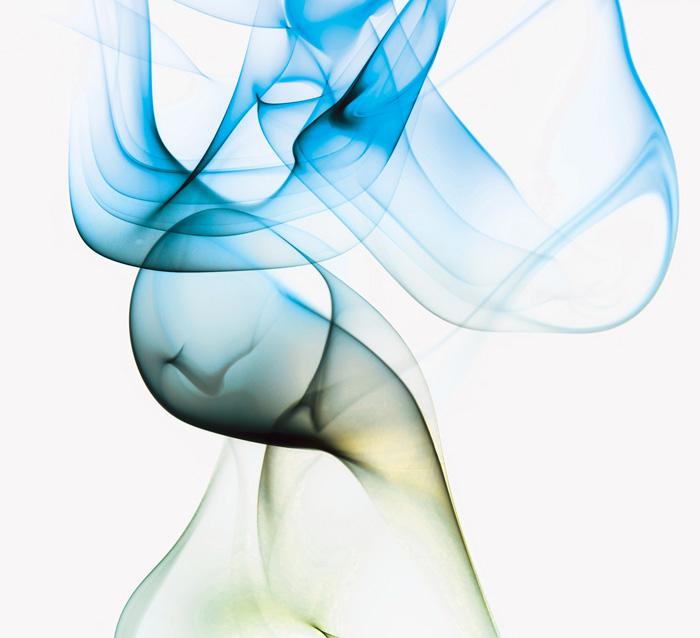
Next-Generation Sensory Science
Sensory science is evolving thanks to a host of advanced methods and technologies that are helping food companies create successful products.
Article Content
To gather sufficient data for its artificial intelligence platform that models sensory perceptions, Gastrograph AI runs tasting panels around the world. In each panel, over the course of five days, about 100 people taste from 80 to 100 food and beverage products, using the company’s smartphone app, which includes 24 broad spectrum flavor categories and descriptive analysis. And every three to five years, they do it all over again to ensure their data is up to date. The 10-year-old artificial intelligence/sensory insights company has so far done these market surveys in 45 regions and 30 countries.
“Not only do we have the contemporary data set, [but] we also have the longitudinal data set, which we can use to understand how preferences are changing,” says Jason Cohen, Gastrograph’s founder and CEO.
Gastrograph’s ability to collect data globally and to use artificial intelligence to interpret it is one example of the ways in which the sensory science discipline is evolving and maturing. Although it’s long been an important part of the product developer’s tool kit, sensory science is gaining more legitimacy as scientific rigor in the discipline increases and recognition of its importance in product development grows. Sensory scientists are using new approaches, seeking a balance between those that are human-centered and those that are technology-based in order to get more reliable data and make better products.
Sensory’s foundations can be traced to 18th century Germany, but the real advances in sensory science hit warp speed post-World War II with the development of the nine-point hedonic scale and flavor profiling. That era also saw the influence of food scientist Rose Marie Pangborn at the University of California, Davis, who trained generations of sensory students. The 1970s brought “a big leap” with the use of quantitative descriptive analysis, says Rebecca Bleibaum, president and chief of sensory intelligence at Dragonfly SCI. “Now you’ve got a robust data set that represents the perception of that product array,” she says.
In later decades, sensory moved out of the marketing department and expanded to include a wider range of inputs, including the influence of environmental factors. The development of sensory’s range is reflected in its changing role and evolving skill sets, says Karen Graves, senior director of sensory and consumer sciences at Bell Flavors & Fragrances.
At McCain Foods, for example, part of the sensory team is now called Global Sensory & User Experience. “Holistically, sensory is all about that product experience—from the time consumers see it on a shelf, get it home, consume it, and how they feel afterwards,” Graves says.
That broadening of understanding around sensory’s scope is reflected in the direction of sensory research. There’s been a significant move in sensory science toward better alignment with empirical research values, says Jacqueline Beckley, founder and president of The Understanding & Insight Group. “Sensory science is way more important than it’s given credit for,” she adds.
Christopher Simons, associate professor of food science at The Ohio State University, notes that much current research is motivated by the search for new tools and methodologies “that are more reliable, more predictive, and that can drive business decisions in better ways,” a change that began about two decades ago, and has accelerated in the past 10 years.
Better science is important not only to make better products, but also to meet legal standards. The inability to justify product claims has led to court cases and regulations. Data need to hold up in a court of law; there needs to be enough evidence to support a claim that a product has a significant difference in its perceived sensory characteristics.
Bleibaum recalls a project that involved processed meats where the data offered was the result of four people at a table eating slices of meat off the same plate—not an approach that is repeatable or reliable. “That’s definitely a big deal,” says Bleibaum. “We say, ‘How much evidence do you need to support your decisions?’ When you talk about claims work, that’s really at the highest level of evidence required, and sensory should rise to that challenge.”
It’s Complicated
But another challenge is that humans are, well, human. We’re inconsistent and inaccurate, we change our minds all the time, and we may or may not really know why. Plus, taste and smell are extremely complex, and we don’t yet entirely understand how they work.
“Humans are so different,” says Pamela Rupp, a food scientist and senior sales representative at Aromyx, a biotech startup that uses synthetic biology and data science to measure taste and smell. “They all perceive odors differently, or some people don’t perceive them at all.”
The days of creating blockbuster products that everyone likes are over; markets now are too diverse and too competitive. Conventional consumer testing methodologies don’t represent the broader population and conclusions based on them are often wrong, says Gastrograph’s Cohen.
One of the company’s most in-demand offerings is “lift and shift”—tweaking a product that’s successful in one country to bring it to another. Almost half of Gastrograph’s business is product reformulations for companies that want, for example, to replace sugars and additives with healthier, “clean label” ingredients that deliver the same taste experience.
“I don’t think that traditional methodologies and sensory science are particularly actionable or useful for product development in the current environment,” says Cohen.
Better Human Responses Via Technology
Using tech is not new in sensory science, but advanced technologies are making their way into the field to help build better methodologies. The objective is to better understand how we make decisions. There’s increasing recognition that context matters; sensory assessments or reactions can’t be isolated from the physical, aural, and visual environment and other stimuli—all of which influence responses to food.
“The idea of getting responses that are less conscious has been building for about the last 10 years,” says Beckley. “If we create more context and more immersiveness, then some of these other cues and clues will give us a shot at understanding choices better.” Artificial intelligence and machine learning, neuroscience, and immersive environments are among the tools that sensory scientists are investigating to achieve those goals.
Machine learning can be used to model a consumer preference prediction, says Tian Yu, director of sensory at Aigora, a company that helps food companies implement artificial intelligence. If a company wants to change an ingredient, like a sugar substitute, for example, it can model how it affects consumer liking. That helps food companies speed up time to market.
Some researchers are redesigning the sensory booth experience—minus the booth. “There’s been a trend to bring more context to the lab to evoke the elements of real-life situations that would allow people to maybe behave more naturally,” says Julien Delarue, associate professor in sensory and consumer science at the University of California, Davis.
The new immersive room at UC Davis is an attempt to get the best of both worlds. It marries high-quality data capture and tester comfort with the goal of collecting more accurate consumer responses. The room, which uses six video projectors as well as temperature, air, and sound controls, can be changed to mimic different places, like a café or a movie theater. The difference between participants in sensory booths versus the immersive room is profound, Delarue maintains. “When they come to this room, they’re just instantly more relaxed,” he says.
One of his goals is to use the technology in the room to provide the same context to people around the world and to compare their reactions. “That’s another way to look at intercultural differences,” he says.
Or, instead of having subjects travel to a lab to provide sensory input, could sensory data be gathered in consumers’ homes? Some researchers are investigating smart home devices to gather feedback in real time. Aigora has done pilot projects using smart-speaker surveys and offers a platform for companies that want to add them to their repertoire.
This could provide much deeper context and might also help uncover new and unanticipated ways consumers use products, says Beckley. With a large enough data set, those trends—and others—could be identified.
“Real life isn’t that rigorous,” Beckley observes. “People are doing things in different ways all the time. So, you get real-life feedback.”
Well-Grounded Use Cases
Delarue has some reservations about the smart home technology. “As a researcher, I think it’s a great tool,” he says. “But if I do that in a research context, I have a protocol that is approved by the IRB (Institutional Review Board) committee; it’s controlled. If it’s used by companies at home to monitor what people say, I would think that’s too invasive.”
There must be a solid research case for using these technologies, and researchers must be aware of ethical considerations and biases in data, experts emphasize. And some technology may be just too personal and intrusive.
Using neuroscience to measure sensory system responses, for instance, has been touted as a game-changer for perception. But it’s particularly touchy because it involves physical devices, and there are ethical concerns. Not everyone’s a fan or convinced that it is viable for sensory assessment purposes.
Neuroscience is very, very powerful, says Aigora’s Yu, but it doesn’t read minds. “There are many, many measurements,” she says. “But if you’re just reading [an] EEG, you might just read a lot of noise.”
What’s likely is that a combination of technologies and approaches, including traditional sensory methods, will be used, each performing a specific function and providing different parts of the sensory puzzle, says Ohio State’s Simons. “I think the key is to know it’s not one-size-fits-all, and you need to know when to use appropriate technology,” he says.
None of these advanced technologies are viable without high-quality data, and not every company has that kind of data available. One of Aigora’s core services is helping food and beverage companies improve their data infrastructure to connect market, sensory profile, consumer, and product development data. “In food and beverage companies, one little sector may be well organized, but when you look across sectors, it’s definitely not linked together,” Yu explains.
People Power
Despite the emergence of sophisticated sensory technologies, human panels bring undeniable value to the analysis process. No machine can truly replicate the human experience or perfectly predict a consumer preference, says Graves of Bell Flavors & Fragrances.
“I think those are useful tools, like using AI and predictive modeling,” she says. “They’re nice tools that we need to get us to a certain point, but getting that final product in front of the right panel group of people to validate what you’re trying to do is the most important thing.”
Getting better data can mean rethinking how human panels are designed. Sensory panels are very resource-intensive because of the training required, and Bleibaum says getting sufficiently robust data takes a panel of 10 people, give or take two, who analyze the same product three times, resulting in 30 observations. She considers this the best practice for quantitative descriptive analysis.
Panel designers must also be mindful of biases and be aware of the many cultural, genetic, and geographical differences that influence panelists’ perceptions, says Rupp. “You can only take some of the biases out, but there’s always going to be something there because it’s so complex.”
One of the biggest divides, says Bleibaum, is misunderstanding panel results. Some think they can train panelists for hundreds of hours and get a single measurement. But what you’re actually learning is if they can do what they’ve been trained to do, she says, not their perceptions of a product.
A different approach involves a different type of expert—one who’s already trained. The team at Dragonfly realized that trained chefs are an underutilized resource for sensory research. Regular consumers generally need eight to 10 hours of training, but chefs typically need only 90 minutes.
“They are so quick, they have a world of experience, [and] they’re food immersed,” Bleibaum says. “The data quality is fantastic when we look at the panel performance measures.”
Or there’s the approach taken by Project AROMA at the Monell Center, a basic research institute focused on the senses of taste and smell. Project head Joel Mainland, a neuro-scientist, says the study explored the differences between using highly trained subjects versus untrained subjects.
Members of the highly trained cohort provided higher-quality data, but the research showed that there is value in collecting lots of low-quality data from untrained subjects and averaging it. “The leading method that came out of that was to use a lightly trained panel,” says Mainland. “That was a really efficient way to do this that still had very good reliability.”
Sensory science research will continue to progress, exploring perception and responses that we are just beginning to understand, experts say. For example, researchers at Ohio State are investigating the gut-brain axis, says Simons, noting that it’s an area to which sensory professionals are beginning to pay attention. “It’s clear that the microbiome is influencing reward decisions,” he says. “Depending on your microbiome, your reaction would be different.”
Broadening sensory science’s scope with new research, advanced technologies, and better overall methodologies will lead to better products and happier consumers. Simons suggests that it’s time to move beyond the traditional sensory testing “liking scores” for measuring consumers’ product preferences.
“We only focus on ‘like’,” says Simons. “And there are so many other, different elements that are really, really important to comprehensively understand food choice and ultimately consumer-related behaviors.”
Sensory Science Game Changers
Sensory is a complex field, and these innovators are developing new approaches to provide more accuracy and speed.
- Aromyx is using the Human Genome Project to clone human receptor sites for olfactory and flavor receptors in order to mimic what humans taste and smell. It’s a bioassay biotech company, explains Pamela Rupp, senior sales representative.
Aromyx has cloned 138 of the 400 receptor sites to date, using robots to help identify which receptors react to which molecules in different flavor compounds.
“We’re trying to mirror the natural human smelling process,” says Rupp.
- Project AROMA, a research initiative of the Monell Center, a scientific institute focused on taste and smell, is creating an open source database of 10,000 odors that will be used to develop machine learning models for aroma prediction. The goal is digitizing odors, says Monell researcher Joel Mainland.
“In the case of single odors, can we look at molecular structure and predict what it smells like?” Mainland asks. “In the case of mixtures, can we take chemicals and concentration in a mixture and predict what that mixture will smell like?”
- Gastrograph uses thousands of human testers to obtain data for an artificial intelligence platform that models human sensory perceptions of flavor, aroma, and texture. With global baseline data sets, the company can model and predict the product responses of target demographics in different countries.
What we’re doing is highly specific for product formulation and development,” says founder and CEO Jason Cohen. “We take real consumers from target demographics around the world, and we have them taste real products in order to build up the largest proprietary data set of on-market products that’s ever been assembled.”
Omnivore Podcast
For more on the evolution of sensory science and why it is vital to product development, listen to an interview with Rebecca Bleibaum, president and chief of sensory intelligence at Dragonfly SCI, in IFT’s Omnivore podcast.
Key Takeaways
- Artificial intelligence platforms, at-home assessment tools, and neuroscientific techniques are among the new approaches advancing sensory science.
- Creating more context and immersive environments can yield better sensory data.
- Even with the availability of new tools and techniques, human sensory panels will continue to play a key role.














